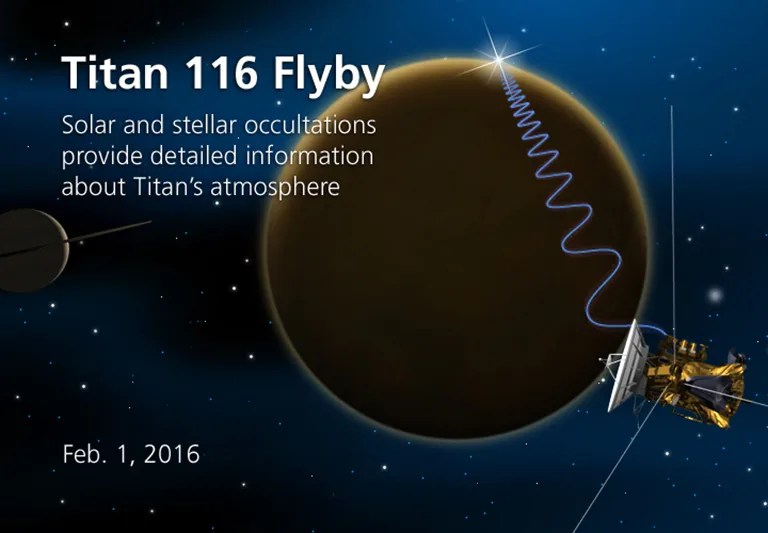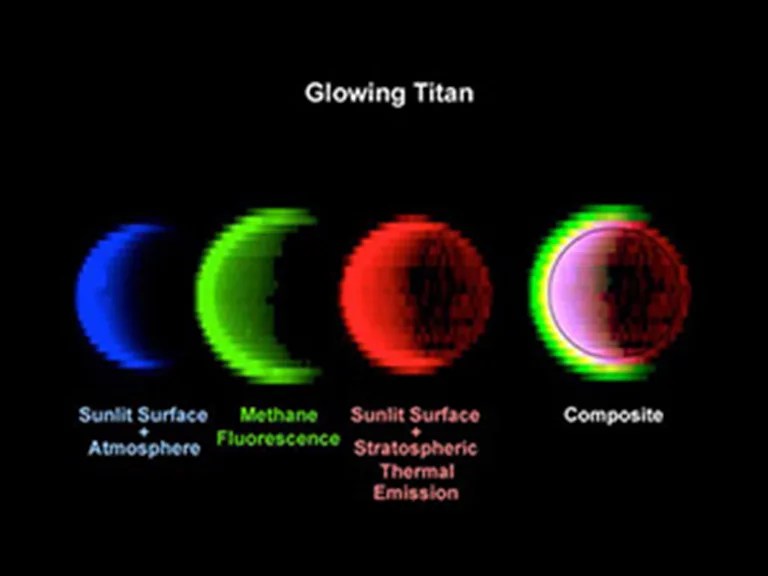1 min read

The Ultraviolet Imaging Spectrograph (UVIS) will observe two stars as they disappear behind Titan's atmosphere, which will provide detailed vertical profiles of composition and temperature in the high atmosphere not possible with any other instrument. UVIS also will take advantage of solar occultations to probe both northern and southern latitudes. The solar occultation is also observed by Visible and Infrared Mapping Spectrometer (VIMS) to provide detailed vertical profiles of composition and aerosols in the atmosphere below 200 km.

The glow of Titan's extensive atmosphere shines in false colors in this view of Saturn's gas-enshrouded moon acquired by the Cassini spacecraft visual and infrared mapping spectrometer during the July 2, 2004, flyby.
Date
Feb. 1, 2016
Altitude
870 miles (1,400 km)
Speed (rel. to Titan)
12,974 mph (5.8 km/sec)
Share
Details
Last Updated
Jan 24, 2024
Editor
NASA Science Editorial Team
Related Terms
Keep Exploring







